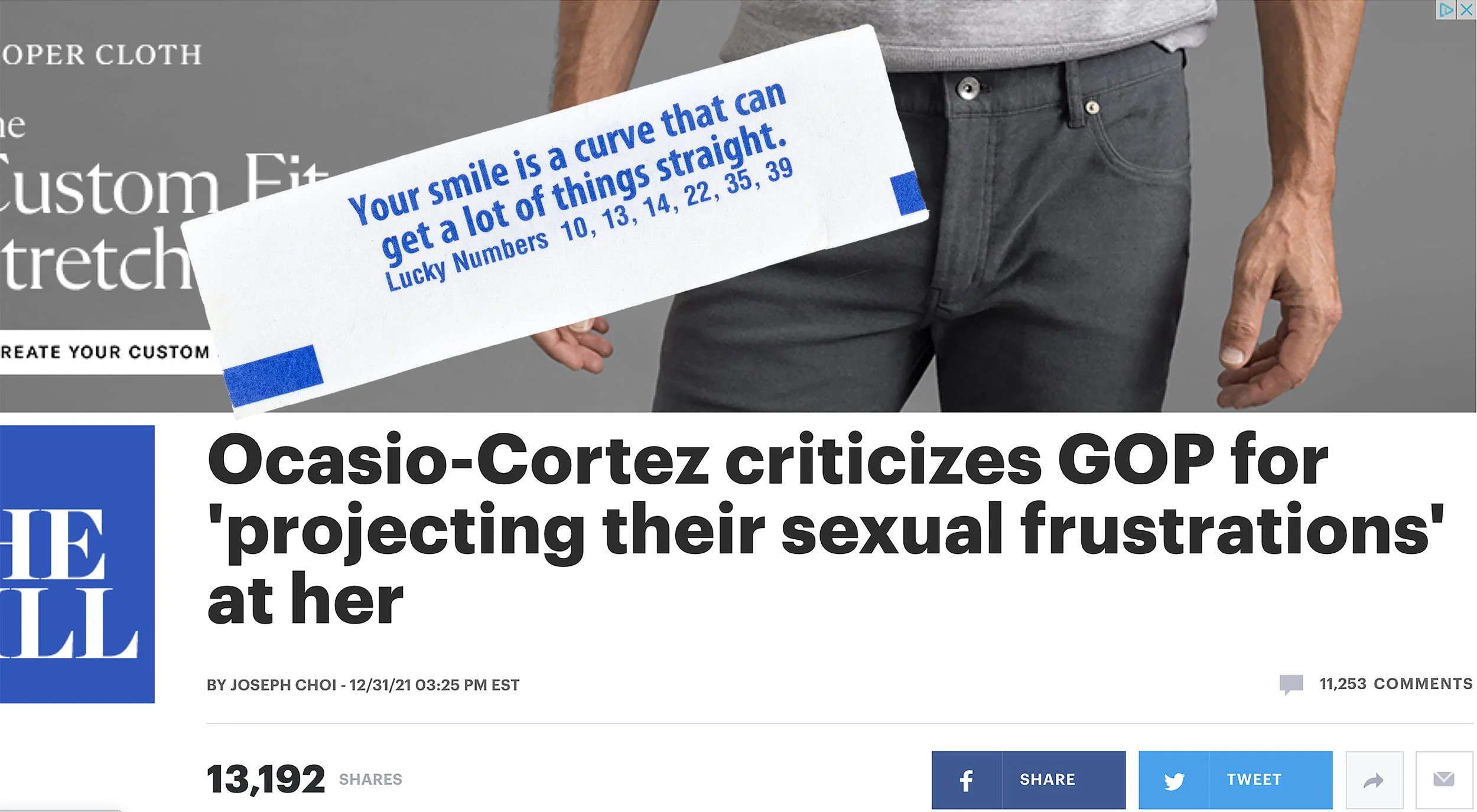Bad Fortune
SaveArtSpace, collaborating with Art At A Time Like This, presented artworks on billboards around NYC for the public art exhibition, Ministry of Truth: 1984-2020. Launching October 12th, 2020, featuring artworks that commented on the state of U.S. politics and that stimulated dialogue about the increasing polarization of our society. In addition to the public art project, Ministry of Truth was featured on artatatimelikethis.com, accessible to over 120,000 viewers around the globe.
The SaveArtSpace x Art At At Time Like This selected artists were: Dread Scott, Deborah Kass, Marilyn Minter, Shirin Neshat, Sue Coe, Abigail DeVille, Akinbo Akinnuoye, Angela Portillo, Ruj Greigarn, V.L. Cox, Rachel Hsu, Lola Flash, Aaron Gilbert, Helina Metaferia, Terry Berkowitz, Ileana Doble Hernandez, Dan Perjovschi, Guerilla Girls Broadband, Mel Chin, and Holly Ballard Martz.
This exhibition was curated by Barbara Pollack, Anne Verhallen, Jerome Lamaar, Larry Ossei-Mensah, Sophia Marisa Lucas, & Carmen Hermo. (Video credit Tim Buol from Matte Projects)
Confidence, from the series Bad Fortune
Dreams, from the series Bad Fortune
They Can, from the series Bad Fortune
Facts, from the series Bad Fortune
Curiosity, from the series Bad Fortune
Lifetime, from the series Bad Fortune
Winner, from the series Bad Fortune
Appearances, from the series Bad Fortune
Keep true, from the series Bad Fortune
Soul Devout, from the series Bad Fortune
Smile, from the series Bad Fortune
I started collecting fortune cookie strips since I immigrated to the United States, more than a decade ago. It was one of those things that you do by instinct, without a definitive purpose, but as a way to start creating a history in a place where you don’t have one. Every time I crack a fortune cookie, my brain provides scenarios in which the encountered fate allows me to embrace the present or fear the future. The platitudes are so general that any of them can apply to a myriad of situations, so we create specific connections between reality and fantasy, according to our own life experiences. Something similar happens in photography, without a definition of context a photograph becomes an open phrase, ready for the viewer to complete the narrative.
Fortune cookies, thought as Chinese, grabbed my fascination when I learned that these are American made. Their uncertain origin has been traced to Japanese immigrants, but truth is these are nowhere to be found in China. During grad school, one of my favorite topics of discussion was Jean Baudrillard’s definitions of simulation and simulacra. According to Baudrillard, “Simulacra are copies that depict things that either had no reality to begin with, or that no longer have an original. Simulation is the imitation of the operation of a real-world process or system over time.” I keep thinking of fortune cookies consumption in the United States as something in between these two: Chinese food eaters trying to simulate a Chinese experience, that doesn’t really exist.
In 2020, with the extra time at home, I found my bag of strips in a box. As I laid them in the floor and read them, I didn’t remember where I got them or why I kept them. The history I meant for these to create had been lost in my mind forever. However, the banality of the phrases still spoke to me. “Today is the tomorrow that we worried about yesterday” hit a nerve, as I rapidly remembered how drastically life had changed, and also after, when Donald Trump referred to the “China virus” in that CNN interview. It was a matter of time before I made the connections between the “fortunes” and the media that I consume daily, informing my perspective on life.
In this series, my job is finding an image and a fortune cookie strip that together support my judgements. I’m enamored with the serendipity of this process, because it is based in fortuity. By providing a pair of text and image, it is my intention for each “Bad Fortune” to redirect the meaning of the picture to a specific idea, sometimes a sarcasm and others a serious thought, but always in an attempt to engage my audience to focus in one thought, as a common ground.











